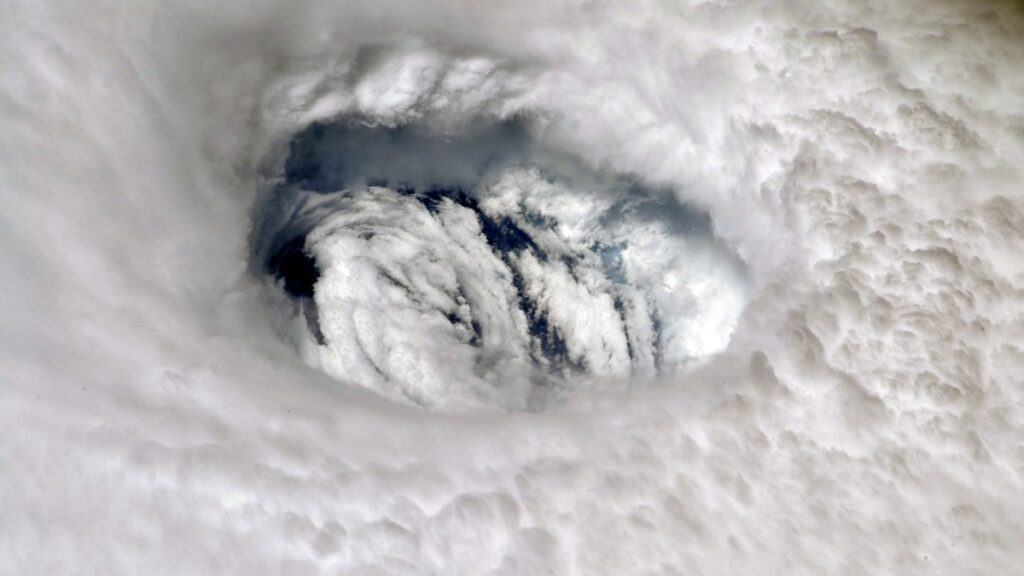Warm water is like fuel for tropical storms and hurricanes—the hotter the water, the more powerful the fuel.
As the planet warms, that fuel is becoming more potent, and the link between extreme weather like hurricanes and climate change is becoming clearer. Warmer temperatures in the air and sea help are helping hurricanes grow more powerful and deadly.
In 2019, the same perennially warm waters that attract tourists to the Bahamas also helped sustain Hurricane Dorian, one of the most destructive storms ever seen in the region. Historically cooler regions such as the northern Atlantic Ocean are warming as well, a troubling trend for those living in the Atlantic hurricane basin.
Data show that the world’s oceans have never been hotter.
How do hurricanes form?
A hurricane begins as a cluster of thunderstorms over the ocean. Many begin off the west coast of Africa when a westbound jet stream called the African Easterly Jet blows across the eastern Atlantic. Annual seasonal temperature changes alter the jet stream’s latitude, which leads to low-pressure winds that move through the air as waves.
(Why 2024 is forecasted to have a record breaking hurricane season.)
These winds move like whips over the ocean, forcing water to evaporate and rise into the atmosphere where it cools, condenses, and forms storm clouds. An estimated 85 percent of major Atlantic hurricanes are born off the African coast.
When those storms are exposed to enough warm water and westbound winds, they can form a tropical depression, in which an area of drier, cooler air rushes to fill the void left by rapidly rising warm air.
In the Northern Hemisphere, storms spin counter-clockwise because of the Coriolis effect, a term that refers to how objects move across our rotating Earth.
When a storm stalls over land as with Hurricane Harvey in Houston in 2017 and Hurricane Florence in the Carolinas in 2018, it typically weakens quickly because it no longer has warm water to fuel it.
How heat creates superstorms
Both the temperature at the surface of the ocean and the depth of that warm water contribute to how strong a hurricane becomes.
Over warm water, a tropical depression will suck up more warm water vapor like a straw, making the system stronger and condensing the dry, low-pressure into the center. This is when a tropical storm forms. As the storm continues sucking up water vapor, it pushes more wind to the outer edges of the storm system, causing the wind to wick up more moisture and creating a feedback loop. If sustained, the low-pressure center in a tropical storm will form the eye of a hurricane.
According to NASA, ocean surface temperature must be about 79 degrees Fahrenheit for a hurricane to form, and a tropical depression is only upgraded to a hurricane when it reaches 74 mile-per-hour winds.
Heat influences how tightly the hurricane spins, but it’s atmospheric winds that decide how quickly a hurricane will travel through the ocean.
How does climate change affect hurricanes?
To determine the link between a particular storm and climate change, scientists perform what’s called an attribution analysis. By modeling climate conditions that might have existed without warmer temperatures, scientists can reconstruct the behavior of a storm in those alternate conditions.
An analysis of 2020’s deadly hurricane season found that climate change made the surface of the sea hotter and the season’s hurricanes were rainier as a result. For every degree increase in temperature, the atmosphere can carry about seven percent more water vapor.
Warm ocean is also helping storms undergo “rapid intensification,” when storms dramatically increasing in intensity in less than a day. This is making it more challenging for meteorologists to predict storm behavior in advance and warn those who might be in harm’s way.
While Category 5 is currently the highest designation for a hurricane, some engineers are preparing for a future where storm winds exceed our expectations, growing into a so-called “Cat 6.”
This story originally published on September 9, 2019 and has been updated with new information.
>>> Read full article>>>
Copyright for syndicated content belongs to the linked Source : National Geographic – https://www.nationalgeographic.com/environment/article/how-warm-water-fuels-a-hurricane
